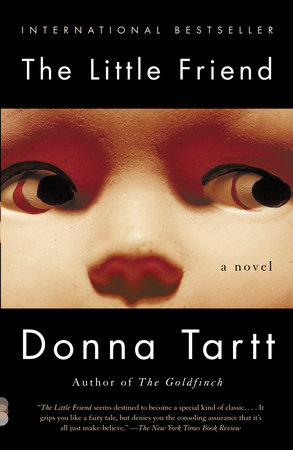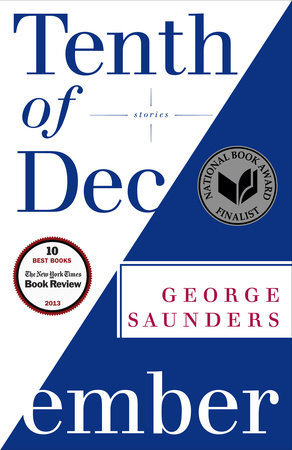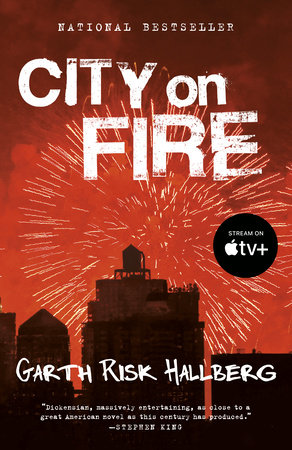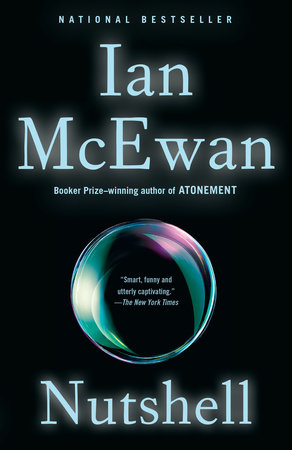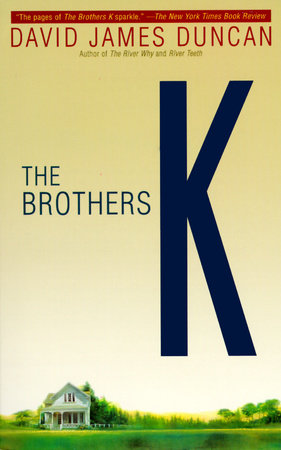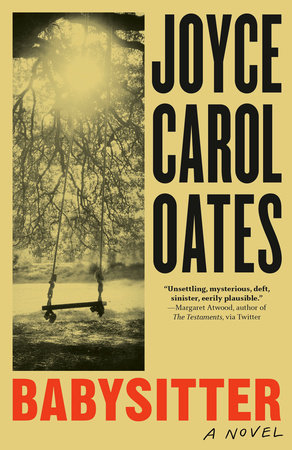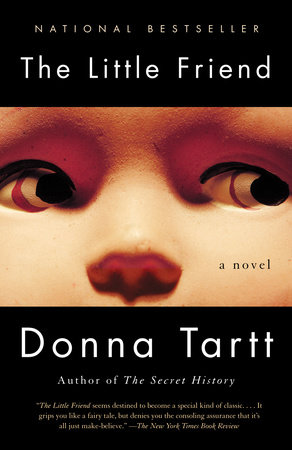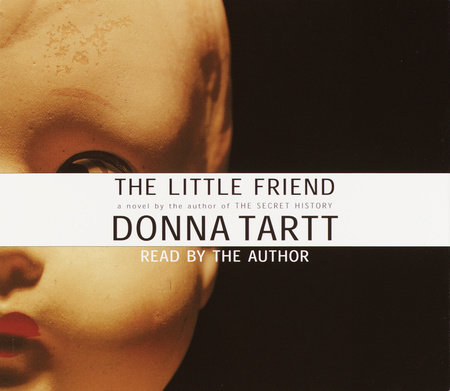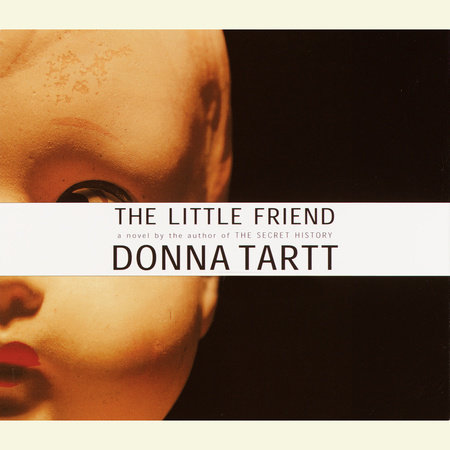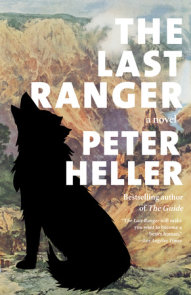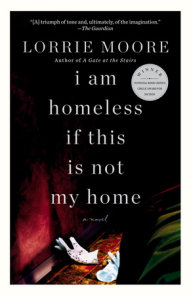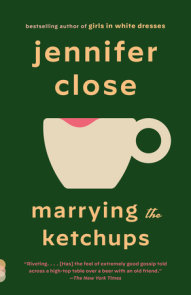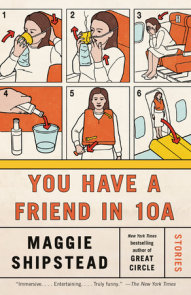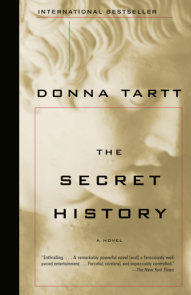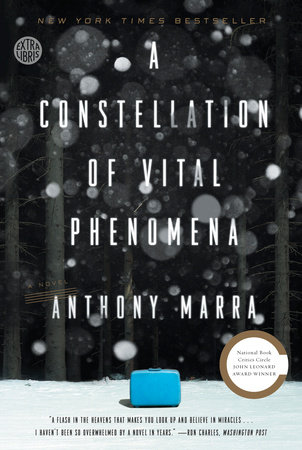Author Q&A
A Conversation with Donna Tartt, Author of THE LITTLE FRIEND
Q: Relieved?
A: About what?
Q: That you can finally tell people your novel is done.
A: Actually, I enjoy the process of writing a big long novel. Melville came up with the best metaphor for it: a deep-sea dive. “I love all men who dive,” he says. “Any fish can swim near the surface, but it takes a great whale to go down stairs five miles or more; & if he dont attain the bottom, why, all the lead in Galena can’t fashion the plumet that will.” He’s talking here not about Moby Dick, as you might think, but about writers—about “thought-divers,” as he calls them, “the whole corps that have been diving & coming up again with bloodshot eyes since the world began.”
Anyway, it gets into one’s blood, this long lonely way of writing, like a long sea-voyage. Men used to come back from three-year whaling voyages sunburnt and emaciated and vowing never to go on another one, yet something would draw them back to the water again. And it’s the same with me. I’ve written only two novels, but they’re both long ones, and they each took a decade to write. It’s a slow, quiet, gorgeous drift, with its own pleasures and difficulties and dangers, completely removed from whatever storms are going on up on the surface, and there’s a slight sense of decompression when I come back up and into the regular old noisy world again. So I’m rather anxious to get back to work on something else. Not preliminary dives—not the little shallow ones, where you’re only getting ready—but the kind where you don’t come up again for years.
Q: It’s been ten years. Inevitably, people are going to ask, why so long?
A: There’s an expectation these days that novels—like any other consumer product—should be made on a production line, with one dropping from the conveyor belt every couple of years. But it’s for every writer to decide his own pace, and the pace varies with the writer and the work. The Little Friend is a long book. It’s also completely different from my first novel: different landscape, different characters, different use of language and diction, different approach to story. Taking on challenging projects is the way that one grows and extends one’s range as a writer, one’s technical command, so I consider the time well-spent.
When I was young, I was deeply struck by a piece of advice that John Gardner gave to beginning writers: “Write as if you have all eternity,” he says. This is the last thing a publisher or an agent or an accountant would tell you, but it’s the best advice in the world if you want to write beautiful, well-made books. And that’s what I want to do. I’d rather write one good book than ten mediocre ones.
Q: Like its predecessor, THE LITTLE FRIEND opens with a murder and deals ostensibly with crime and punishment. Why are you fascinated with these subjects?
A: I’m interested less in the act of murder itself than in what drives people to it, and the echoes and repercussions of the act.
Q: What prompted you to adopt the point of view of a young girl?
A: Actually, the novel isn’t from the point of view of a young girl—a good deal of the novel is seen through her eyes, but by no means all of it. We also see into the hearts and minds of her grandmother, her mother and sister, her best friend—and we see too across town, into the hearts and minds of the people who are her sworn enemies. It’s the viewpoint some critics call “authorial omniscient” and for reasons which are probably obvious, it’s much more technically difficult to write than first-person.
I think that any writer will tell you that it’s extremely hard to write about children, but the trick is to resist the temptation to make them “lovable.” Children have very sharp powers of observation—probably sharper than adults—yet at the same time their emotional reactions are murky and much more primitive. They see things quite clearly, but they don’t entirely understand what they see, and they don’t understand the full consequences of their actions.
Q: Ultimately, THE LITTLE FRIEND is an adventure story in the vein of classic tales by Stevenson and Dickens.
A: Well, Dickens didn’t really write adventure stories, not the way that Stevenson did. They are very different writers, though something they share is a sharp visual perception and an even sharper eye for human nature, the character-betraying detail. But what mainly makes them both so delightful is that they are natural storytellers who have a wonderful command of style—even though their styles are very different.
Storytelling and elegant style don’t always go hand in hand. The storytelling gift is innate: one has it or one doesn’t. But style is at least partly a learned thing: one refines it by looking and listening and reading and practice—by work. When one finds the two together—storytelling and style—it’s the most wonderful thing in the world to me. These are the books I never tire of. Too often, writers only think that one aspect or the other is important. If I was forced to choose between the two of them, I would have to choose style: I love Proust, who’s an exquisite stylist, but sometimes a lax storyteller. Whereas I’m not so crazy about a writer like Theodore Dreiser, who’s a crack storyteller with no sense of style at all. But the books I love best marry the two elements, and I try to marry the two in my own work.
Q: Did the work of Dickens and Stevenson exert any influence over you while you were working on THE LITTLE FRIEND?
A: In a subliminal sense, mostly. The books I loved in childhood—the first loves—I’ve read so often that I’ve internalized them in some really essential way: they are more inside me now than out.
Q: How prominently do innocence and the loss of innocence figure in THE LITTLE FRIEND?
A: That’s not really an issue of the book, as far as I’m concerned—which is to say, I don’t think about abstract concepts such as “innocence” or “loss of innocence” while I’m working. That’s something that readers come in and find (or don’t find) in the finished work, much later. It doesn’t figure at all in the making of the work.
When I’m writing, I am concentrating almost wholly on concrete detail: the color a room is painted, the way a drop of water rolls off a wet leaf after a rain. Then—once one captures the detail itself—there’s the work of getting the sound right, the particular rhythm of a sentence or a paragraph or a line of dialogue. But almost never, in writing a novel, do I find myself thinking about themes or symbols or things of that nature. They either occur naturally within a story—which is to say, spontaneously and unconsciously, as they do in a dream—or else they seem a bit forced.
Q: Do you feel that you are a Southern writer?
A: People always want to call me a Southern writer but though I grew up in the South, I don’t feel that the label quite fits my work. My first book was written in New England, about New England. And I’m working on two projects at the moment—one a novella, the other a new novel—neither of which has anything at all to do with the South. So I’m not a Southern writer in the commonly held sense of the term, like Faulkner or Eudora Welty, who took the South for their entire literary environment and subject matter.
Q: What was it like for you to write a novel so immersed in Mississippi culture? Was there a lot of research involved, or did you draw more from personal experience?
A: Well, this is the nice thing about being a novelist, as opposed to a non-fiction writer (who has to do a lot of research) or an autobiographer (who relies on personal experience). The job of the novelist is to invent: to embroider, to color, to embellish, to entertain, to make things up. The art of what I do lies not in research or even recollection but primarily in invention. If a novel is merely a presentation of documentary facts then it isn’t very interesting reading. You might as well read a travel guide or look at old photographs.
